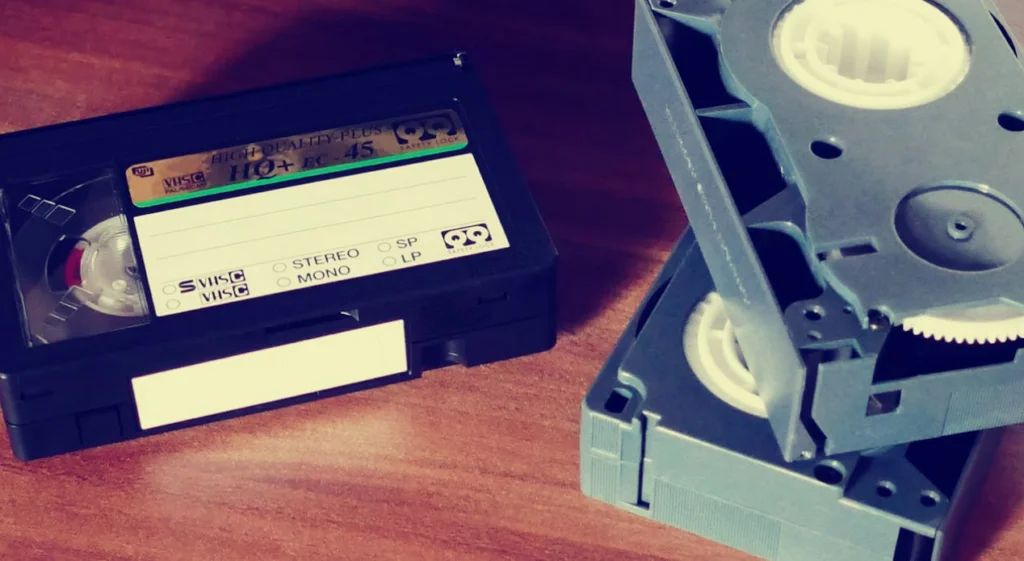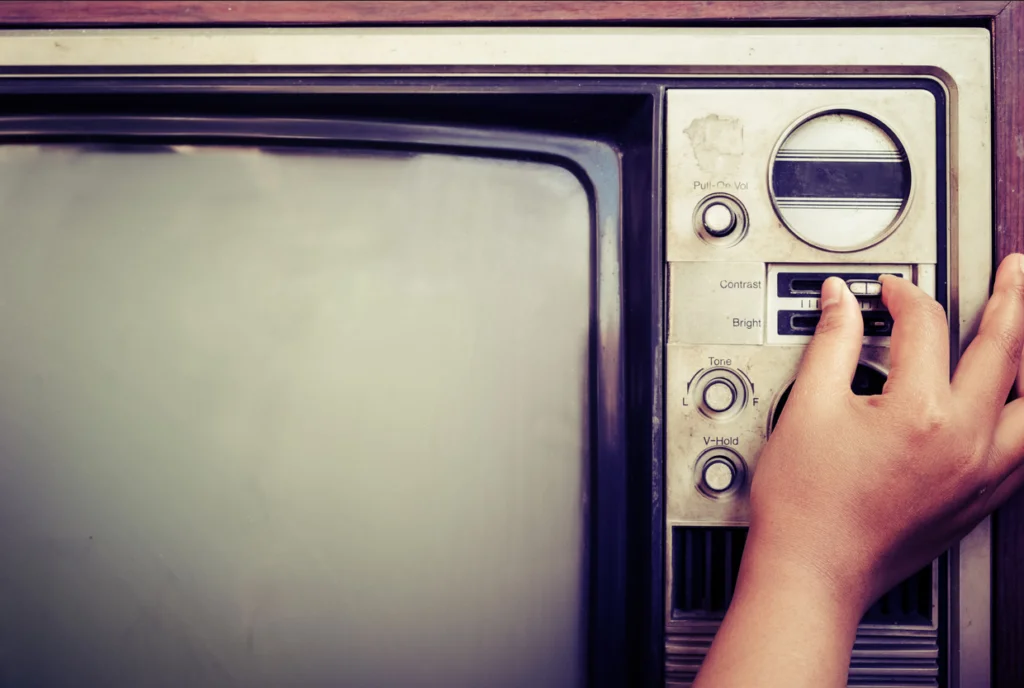Long before screen time became a bargaining chip and helicopter parenting took flight, 1980s childhoods came with a robust curriculum of household responsibilities that would make today’s kids stare in disbelief. These weren’t optional contributions to family life but expected duties, often assigned with the character-building refrain, “While you’re living under my roof…” The lack of modern conveniences, combined with parents who had themselves grown up in the even more labor-intensive 1950s and ’60s, created a chore landscape that taught responsibility through genuine, sometimes grueling, work. These tasks not only helped maintain households but inadvertently prepared a generation for life skills that technology would later render nearly obsolete.
1. Answering the Family Phone Without Caller ID

Before smartphones became personal possessions, the family telephone—mounted on the kitchen wall with its impossibly tangled cord—required children to serve as human answering machines and message-takers. This seemingly simple responsibility carried unexpected weight as you nervously answered calls from relatives, your parents’ bosses, or that scary neighbor who always sounded angry, with no advance warning of who awaited on the other end of the line. The pressure to properly record messages—”Can you tell your father that Bob called about the Peterson account?”—created genuine anxiety as you scrambled for paper and pen while trying to sound professionally mature to important adults. Caller ID Reputation explores the evolution of people’s attitudes towards picking up phone calls thanks to caller ID.
The ultimate telephone responsibility came when parents weren’t home, forcing children to make split-second judgment calls about sharing their absence with callers—balancing honesty against the drilled-in stranger danger warnings. The dreaded “When will they be back?” question required diplomatic responses that wouldn’t reveal you were home alone while still being truthful enough to avoid trouble later. The introduction of answering machines in many homes during the mid-80s felt like technological salvation, relieving children of a stressful responsibility that had previously required developing impromptu professional phone manner and message-taking systems that rivaled corporate receptionist training.
2. Rewinding Rental VHS Tapes Before Return

When Friday night meant visiting the local video store to rent movies for the weekend, the final family member to watch each tape faced the dreaded responsibility of rewinding—a process so legendarily ignored that “Be Kind, Rewind” became both store policy and cultural catchphrase. This wasn’t simply pressing a button but rather a time-consuming process accompanied by the distinctive whirring sound of magnetic tape spooling backward at agonizing speed. Dedicated rewinding machines shaped like sports cars briefly appeared in some tech-forward homes, but most families relied on VCR rewind functions that could take five precious minutes per tape—an eternity when you were already running late to return rentals before late fees accrued. According to Legacybox, there’s also some notes to keep in mind when rewinding for digitizing.
The true challenge came with multiple tapes that needed rewinding before the dreaded Sunday evening return deadline, creating a logistical puzzle of starting enough in advance to process all tapes sequentially. Parents’ stern warnings about late fee consequences (“We’ll end up paying more than the movie’s worth!”) created genuine anxiety around this responsibility, particularly when discovering a sibling had secretly watched a movie after everyone went to bed and left it unrewound. The introduction of DVD rentals in the late 1990s eliminated this particular chore, leaving an entire generation with phantom memories of that distinctive rewinding sound and the specific stress of watching the counter numbers tick backward while a parent waited impatiently by the door, car keys in hand.
3. Programming the VCR to Record Shows

Before DVRs, streaming services, or on-demand viewing, recording television shows required children to master the arcane art of VCR programming—a responsibility often delegated to kids because parents struggled with the complicated interface. This wasn’t simply pressing a record button but rather navigating through multiple menus to set specific dates, times, and channels, with the constant pressure of knowing any mistake meant missing a crucial episode of “Miami Vice” or “The A-Team.” The intimidating array of buttons—with cryptic labels like “SLP” and “EP”—created a technical challenge that transformed children into the household’s electronic wizards, expected to translate the VCR manual’s confusing instructions into successful recordings. Mental Floss rewinds history to explore the unique rise of the VCR and its greater impact on entertainment.
The highest responsibility level came with programming multiple recordings over several days, requiring strategic thinking about tape length, recording speed quality trade-offs, and how to communicate to other family members not to accidentally record over important content. The added pressure of checking TV Guide listings for last-minute schedule changes or ensuring sufficient blank tape remained created a part-time job of television management that youngsters took surprisingly seriously. When successful, the correctly programmed recording brought genuine family gratitude and recognition of technical prowess; when failed—resulting in recording the wrong show or cutting off crucial endings—the disappointment could be crushing, particularly if siblings had been promised their favorite program would be waiting after school.
4. Being the Remote Control

Before universal remote controls became standard, many 1980s households designated the youngest family member as the human channel changer—expected to leap up on command to physically turn dials, adjust antennas, or press buttons on early remote-less televisions. This task’s difficulty increased exponentially during sporting events or political coverage when adults called for frequent channel checks to monitor multiple programs simultaneously. The commands often came rapid-fire—”Quick, turn it to ABC! Now back to CBS! What’s happening on NBC?”—creating a cardio workout of dashing between couch and television that left kids wondering why they couldn’t just watch one thing at a time.
The most physically demanding version involved adjusting rabbit ear antennas according to increasingly specific adult instructions—”A little to the left, now up about an inch, hold it right there!”—requiring children to maintain uncomfortable positions while adults determined if the resulting staticky picture was acceptable. The introduction of cable television with primitive early remote controls in many households during the decade gradually phased out this particular form of child labor, though the household hierarchy remained clear in who controlled the actual remote device. Modern children, accustomed to multiple screens and individual viewing devices, can barely comprehend the physical exertion once required to consume television or the negotiations involved in shared family viewing when changing channels required someone’s actual physical movement.
5. Making Collections for Newspaper Routes

Long before digital subscriptions and online payments, collecting money for newspaper delivery meant going door-to-door through your entire route, often in evening hours after adults returned from work. This wasn’t just a simple pickup but rather a crash course in small business management—tracking payments, making change, and dealing with customers who claimed they had “already paid” or would “catch you next week.” The financial responsibility was significant, as most paper routes operated on a system where carriers first paid the newspaper company wholesale rates, then collected retail prices from customers, with their earnings being the difference—meaning uncollected payments directly reduced the child’s income.
The weather conditions during collection nights added another layer of challenge, with rain, snow, or biting cold transforming a 90-minute task into a two-hour endurance test as you waited at doors for customers to find their wallets. The social dynamics proved equally challenging, requiring children as young as eleven to navigate interactions with every personality type in the neighborhood—from the overly chatty elderly woman who needed twenty minutes of conversation before paying, to the grumpy man who scrutinized his bill for errors each month, to houses with scary dogs where you debated whether this month’s payment was worth the risk. When newspaper companies later transitioned to centralized billing systems in the 1990s, they eliminated not just a chore but an entire entrepreneurial training ground that had taught a generation about customer relations, accounting, and the direct relationship between effort and compensation.
6. Untangling Cassette Tapes with Pencils

Before digital music eliminated physical media challenges, 1980s kids faced the tedious responsibility of rescuing beloved music cassettes when tape players “ate” them—spooling delicate magnetic tape into tangled nests that required careful extraction and rewinding. This operation demanded surgeon-like precision, first in gently disengaging the mangled tape from the player’s mechanisms without tearing it, then in the even more delicate process of rewinding the exposed tape back into the cassette using a pencil inserted into the reel holes. The stakes felt enormously high during these repair operations, as each cassette represented both a significant financial investment and often irreplaceable music collected from radio recordings or borrowed from friends.
The most challenging scenarios involved cassettes that had been severely damaged, requiring children to perform complex tape splicing operations using clear Scotch tape to reconnect torn sections—all while recognizing that each repair slightly degraded the sound quality at that precise moment in their favorite song. Mixing tapes added another layer of responsibility, as creating the perfect compilation for a friend or crush required managing multiple source tapes, precise timing of recordings, and the technical skill to minimize the transitions between songs. When CD players began replacing cassette decks in the late 1980s and early 1990s, a specific form of mechanical aptitude became obsolete—though the lessons in patience, delicate manipulation of sensitive materials, and the satisfaction of repairing rather than replacing valued possessions remained embedded in the generation’s approach to problem-solving.
7. Defrosting the Freezer Manually

Before frost-free refrigerators became standard household appliances, many 1980s kids faced the quarterly challenge of manually defrosting freezers—a multi-hour process involving ice picks, hair dryers, and towels spread across kitchen floors. This wasn’t a gentle wiping down but rather an arctic excavation project as children chipped away at ice formations that had gradually entombed frozen food packages in glacial layers. Parents typically scheduled these defrosting operations before family vacations or during major shopping trips, creating strict deadlines to complete the task before frozen foods needed to be returned to functioning cold storage.
The most dreaded aspects involved removing partially thawed mystery packages with freezer burn so severe that identifying the original contents required forensic examination of faded labels. The responsibility increased with the constant parental warnings about not scratching the freezer’s interior walls with the ice pick—a mistake that could allegedly release toxic gases or at minimum result in costly repairs that would “come out of your allowance for the next year.” The introduction of self-defrosting appliances gradually eliminated this particularly unpleasant household task, though not before it had taught a generation about the surprisingly complex physics of ice formation and the satisfaction of transforming a frosted mess into gleaming, organized storage space.
8. Mixing Formula for Younger Siblings

Before ready-to-feed formula became widely available and affordable, older children often shouldered the responsibility of preparing bottles for younger siblings—a task that combined precise measurements, temperature management, and quality control for an infant’s entire nutritional intake. This wasn’t simply stirring powder into water but rather a multi-step process: sterilizing bottles in boiling water, measuring exact amounts of powder and water at specific temperatures, testing temperature on wrists, and ensuring no powder clumps remained that could clog nipples or upset sensitive digestive systems. Parents presented this responsibility with gravity appropriate to its importance—mistakes could mean a hungry, screaming baby or potential digestive issues—creating genuine stress about getting every detail right.
The real challenge came with middle-of-the-night bottle preparations when a crying infant meant sleepy older siblings needed to perform these precise measurements in semi-darkness while parents attended to the baby. The responsibility often extended to cleaning used bottles—a disgusting process of removing soured milk from rubber nipples and glass containers before the sterilization process could begin again. For many 1980s children, this early introduction to caretaking responsibilities created a level of comfort with infant care that would later translate into babysitting jobs, while simultaneously serving as highly effective birth control education as teenagers witnessed firsthand the constant work involved in feeding newborns.
9. Pumping Gas While Parents Paid Inside

Before pay-at-the-pump technology and credit card readers, gas station stops often involved children being entrusted with the actual pumping while parents went inside to pay—a responsibility that combined financial trust, hazardous materials handling, and precise mathematical calculations. This wasn’t simply holding a nozzle but rather managing the entire transaction: confirming the correct octane selection, carefully watching the rapidly spinning price dials to stop at exactly the prepaid amount, and ensuring not a drop was spilled on freshly washed family vehicles. The pressure to pump exactly to the prepaid amount—not a penny more or less—required developing a quick trigger finger on the nozzle and the ability to predict the final few cents during the slower “topping off” trickle.
The responsibility felt particularly significant given the accompanying parental warnings about the dangers of static electricity, gasoline fumes, and the catastrophic consequences of driving away with the nozzle still in the tank—scenarios described with enough alarming detail to make children handle the pump with the caution normally reserved for explosives. In colder northern states, this chore gained additional character-building properties when performed in sub-freezing temperatures while parents waited in warm vehicles, creating a particular form of multi-tasking misery as children tried to monitor pump numbers with watering eyes while maintaining feeling in their fingers. The introduction of pay-at-pump technology in the 1990s eliminated this particular coming-of-age experience, though not before it had given a generation practical experience with responsibility for potentially dangerous equipment and pride in being trusted with significant tasks.
10. Developing Film Photos Without Wasting Frames

In the era of 24-exposure film rolls and expensive developing costs, children bore the considerable responsibility of making each photograph count—a task that involved careful composition, steady hands, and the foresight to anticipate which moments truly deserved documentation. This wasn’t the casual photo-taking of today’s digital world but rather a careful rationing of limited resources, with parents frequently reminding young photographers, “That’s another dollar wasted!” when shots were too dark, blurry, or featured someone blinking. The financial pressure created genuine anxiety around special events like vacations, when children allowed to use the family camera might be entrusted with several precious exposures and expected to capture perfect memorial images.
The responsibility extended to the actual handling of film—loading and unloading rolls without exposing them to light required fine motor skills and attention to detail that could make even confident adults nervous. After waiting days or weeks for developing, the moment of truth arrived when envelope in hand, you discovered whether your careful efforts produced frame-worthy memories or wasted film—with the results often reviewed by the entire family like a performance evaluation. Digital photography has eliminated both the expense and the delayed gratification aspects of this chore, but not before generations of children learned patience, resource management, and the careful consideration that comes with having limited opportunities to get something right.
11. Physically Searching for Siblings at Malls

Before cell phones enabled instant communication, older siblings in 1980s malls bore the sweaty responsibility of physically locating younger family members when it was time to leave—a process that often resembled search and rescue operations across multi-level retail terrain. This wasn’t simply a quick check of predetermined locations but an exhaustive sweep of every arcade, food court, and department store toy section where children might have wandered during the hours of unsupervised roaming that characterized 1980s mall visits. The stress increased exponentially when parents waited impatiently at exit doors, keys in hand, while older children faced the logistical nightmare of locating multiple siblings who had scattered to their own preferred retail destinations.
The difficulty reached its peak during crowded holiday shopping seasons, when finding a specific child in a packed toy store required developing systematic search patterns and the diplomatic skills to extract entranced younger siblings from coveted displays of Transformers or Cabbage Patch Kids. The social dynamics added another layer of complexity, as older children balanced their authority as parent representatives against younger siblings’ resistance and negotiation tactics (“Just five more minutes!”) while feeling the pressure of parental deadlines. Modern families, coordinated by text messages and phone calls, can barely comprehend the particular stress of being responsible for physically locating family members in crowded public spaces—a task that combined orienteering skills with conflict negotiation and time management in ways that tested even the most responsible older children.
12. Setting the Table Correctly for “Company”

When guests were expected for dinner, the seemingly simple task of setting the table transformed into a high-pressure performance of proper placement, precise alignment, and social judgment that would have impressed military inspectors. This wasn’t casual everyday plate placement but rather a formal exercise in remembering which side received forks versus knives, exact napkin folding techniques, and the mysterious rules governing water glass versus wine glass positioning—all under parental supervision that suddenly noticed microscopic details normally overlooked. The standards increased exponentially when grandparents or parents’ work colleagues were expected, with children sometimes pressed into service hours before arrival time to polish silver, check glassware for water spots, or iron cloth napkins to meet expectations that could rival formal restaurant service.
The pressure reached its peak with last-minute inspections, when parents would scan the carefully arranged settings with increasingly critical eyes and make minor adjustments while delivering impromptu etiquette lessons about why these precise arrangements mattered. The psychological burden extended beyond physical setup to behavior during the actual meal, with pre-dinner briefings about acceptable conversation topics, prohibited questions about guests’ personal lives, and reminders not to reach across the table or chew with mouths open—creating an entire secondary performance anxiety once guests actually arrived. Modern casual dining trends have largely eliminated these formal table-setting rituals, but not before they taught generations of children the connection between careful preparation, attention to detail, and the social message sent by thoughtfully arranged environments—skills that would later translate into everything from job interview preparation to event planning.
Looking back at these labor-intensive childhood responsibilities, it’s clear they provided more than just household help—they were informal apprenticeships in adulthood. These chores taught tangible skills that many parents had themselves learned from their parents, creating generational continuity in practical knowledge. Beyond the specific tasks, these responsibilities conveyed deeper lessons about accountability, problem-solving, and the satisfaction of work well done without constant supervision or immediate rewards. While few would advocate returning to the days of manual freezer defrosting or cassette tape surgery, there’s something valuable in remembering a time when children’s contributions to household functioning weren’t symbolic but genuinely necessary—providing authentic opportunities to develop competence, confidence, and the understanding that family life required everyone’s participation, regardless of age.


